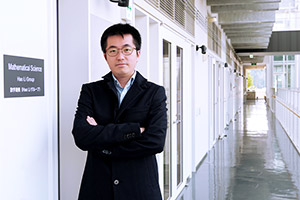

11/27/2023

Electrochemical synthesis of organic chemicals is proving to be a powerful strategy for reducing greenhouse-gas emissions from traditional fossil fuel-driven chemical processes. This approach not only seeks to replace less efficient thermochemical methods but also offers opportunities to redesign catalytic reactions, leveraging unique strengths inherent to electrochemistry.
In a recent 2022 article, Li et al. from AIMR exemplified this by revisiting the synthesis of propylene oxide through direct epoxidation of propylene (DEP)—a process known for its low selectivity and high temperature demands.
“One key advantage of electrochemistry over thermochemical processes is its potential-dependent activation kinetics,” says Li, the first and corresponding author of the article. “We used this aspect to model individual reactions associated with DEP to interrogate which catalyst surface features and reaction environments can both enhance selectivity and lower reaction temperatures.”
Combining density functional theory calculations, surface Pourbaix diagram analysis, scaling relation analysis, and microkinetic modeling on Ag, Au, Cu, PbO2, PdO2, PtO2, and TiO2 surfaces, the team determined that, in the presence of atomic oxygen provided by water activation, DEP is facile on weak-binding catalysts such as PtO2.
“Our results suggest that more catalytic features could be finetuned to promote highly selective electrochemical DEP at room temperature,” concludes Li. “Currently, we are collaborating with experimentalists from the University of Sydney to realize the catalyst capable of replacing thermochemical DEP.”
(Author: Patrick Han)
This research highlight has been approved by the authors of the original article and all information and data contained within has been provided by said authors.